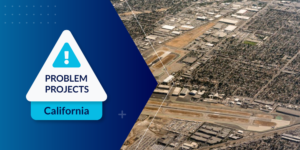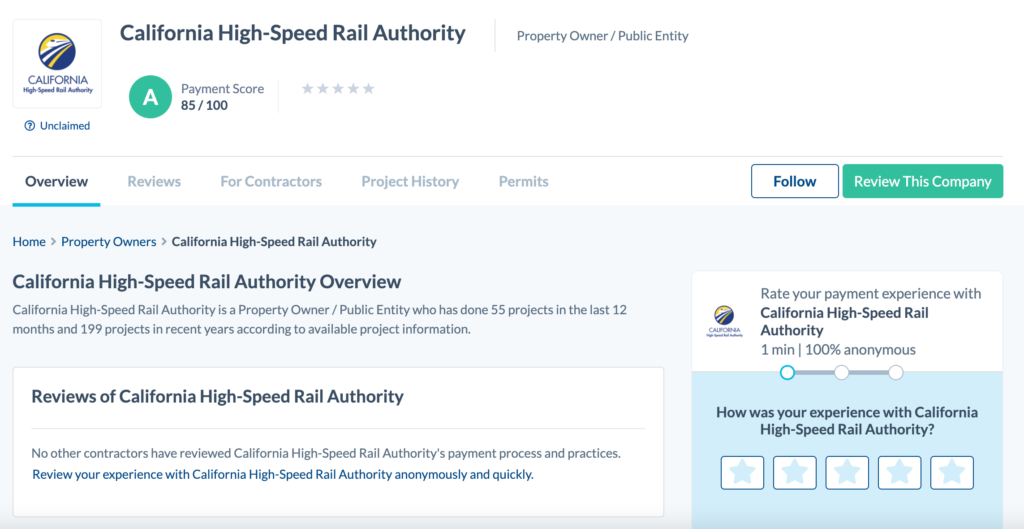
Contractors involved in the construction of California’s bullet train project may see another setback on the project soon — and it may just be one of many.
Hollywood Burbank Airport filed a lawsuit against the bullet train project in February 2022, asking that the project’s continued approval be put on hold while plans are redesigned to fit a new environmental impact study.
“The draft EIR failed to fully analyze, disclose, and mitigate potential project impacts on the airport, including to the safety of the airport’s operations,” the suit said, claiming that the California High Speed Rail Authority improperly delayed a report on how construction would affect airport operations and potentially violated California’s Environmental Quality Act.
The plans could potentially require the need for significantly more construction work: Burbank, California officials previously warned that construction would impact the city’s water supply, likely requiring mitigation.

Learn more about California High-Speed Rail
Brightline West isn’t the only high-speed rail project on the map: The California High-Speed Rail Project involves hundreds of construction businesses.
Get the facts you need to know about the project — plus contact information necessary to communicate with those at the top of the payment chain.
Though the need for more work seems like it could be a benefit for contractors in California, it’s not that simple. There’s a chance that the continued rise in necessary work could create further setbacks.
The project’s recent setbacks have resulted in raising public opposition to the project. Even if this lawsuit fails to derail the plans, low public support may put further development in jeopardy going forward.
According to the Wall Street Journal, voters approved $10 billion in bonds for the project in 2008, when the project’s price was estimated to be $40 billion total.
However, these estimates have soared. In 2020, the estimated price was $100 billion, and a February 2022 reevaluation by the California High Speed Rail Authority increased its estimate to $105 billion.

See California High Speed Rail Authority’s payment history and anonymously rate your payment experience.
This could keep going up as well, with the Wall Street Journal’s editorial board claiming that “This latest $5 billion doesn’t even account for rapidly rising material and labor costs.”
“Costs keep soaring. Construction deadlines are never met,” said the San Diego Union-Tribune’s editorial board. “Legally binding promises made in 2008 about having a train able to go from San Francisco to Los Angeles in two hours and 40 minutes seem more like punch lines in a comic’s routine than serious rhetoric.”
Many people involved are concerned that the project would be ineffective even when it was finished, with concerns about slow and environmentally-unfriendly trains becoming a huge part of the conversation.
“I’m worried that we’re dead in the water,” said California Assembly Speaker Anthony Rendon in 2021. “I’m also worried that we have what would be a laughingstock for California.”
Despite the pushback, those involved in the project’s construction seem to be confident that major infrastructure spending nationwide — spurred by the Biden administration’s focus on the $1.2 trillion infrastructure bill passed late in 2021 — will make its way to the bullet train project, potentially providing a path for the project to get its significant rise in construction.
The California High Speed Rail Authority particularly believes that it’ll get the opportunity to get a boost from this, saying that “New federal funding will also enable the Authority to invest dollars statewide to advance the program, make capital investments to improve mobility and advance the connectivity of high-speed rail with existing passenger rail providers.”